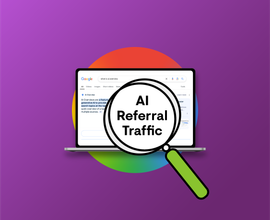Healthcare Technology Trends 2021
How telehealth, AI, IoMT, AR, VR, and staffing are fueling healthcare transformation
The COVID-19 pandemic has propelled digital transformation in healthcare to new heights. In the first half of 2021 alone, venture capitalists (VC) invested $14.7 billion in healthcare technology , surpassing the funding total from all of 2020.
The major driver: telehealth. The number of telehealth visits grew 78 times pre-pandemic levels in the first few months of the pandemic. While some patients have since returned to in-office visits, the number of telehealth visits remains 38 times higher than pre-pandemic levels , according to a McKinsey & Company report.
Add in artificial intelligence (AI), the Internet of Medical Things (IoMT), augmented reality (AR), virtual reality (VR) and staffing solutions, and healthcare transformation is clearly front-and-center on the minds of providers and patients. Let’s take a look at healthcare trends for technology searches in 2021:
Overall Technology and Healthcare Industry Trends in 2021
Conductor search engineSearch Engine
A search engine is a website through which users can search internet content.
Learn more data reflects the skyrocketing interest in digital healthcare. Searches for “healthcare IT” and “medical IT solutions” in 2021 saw a 24% increase YoY from 2020.

A dramatic 550% YoY increase in search demand for “healthcare IT consulting services” shows that providers looking toward the future of healthcare seek expert guidance in choosing and implementing the right solutions.
In addition, a sharp increase in ransomware attacks at hospitals globally has led to a spike in “healthcare cybersecurity” and “healthcare IT security” searches. They’re up 13% YoY and are expected to grow in upcoming months.
Healthcare Technology Trends in Telehealth 2021
With 83% of patients saying they’ll continue to use telehealth even after the pandemic resolves , providers are using digital transformation to perfect the art of virtual visits. The top breakout telehealth searches of 2021 supports this:

Cross-border telemedicine involves using virtual visits to care for patients across state and country lines. To do so effectively, providers must transfer patient data securely and follow each jurisdiction’s legal data privacy requirements. Cloud-based healthcare IT solutions help to make this happen.
Searches for “teladoc microsoft” grew since the July 2021 announcement that Teladoc will allow providers access to its Solo telehealth platform through the Microsoft Teams environment . This integration is expected to be available next year.
Nurses have played a crucial role in telehealth by helping to triage patients, including patients who manage chronic conditions like diabetes and heart failure. The 23% increase in “telehealth nursing” searches reflects people’s interest in learning more about nurses’ role in telehealth, what telehealth nursing is, and how people can become a telehealth nurse.
Changing Mandates Drive Interest in E-prescribing
Effective January 1, 2021, Medicare mandated prescriptions for all controlled substances covered under Part D to be transmitted electronically . This led to a 37% YoY increase in searches related to e-prescribing. Three hot searches within this category: “e prescribing laws by state”, “e prescription services”, and “e prescription certification”.
Healthcare Trends in EHR, EMR, and Blockchain 2021
Electronic health records (EHR) and electronic medical records (EMR) lie at the heart of the patient care health systems that providers deliver. Keeping those records private and safe from cyberattacks is of utmost priority. As a result, search interest remains high for EHR and EMR solutions throughout the healthcare industry, especially for private practices.

At the same time, monthly search interest for “blockchain in healthcare” has averaged 2,900 over the past 12 months, with a spike in May 2021. The tie-in: many providers are looking at blockchain as a way to make EHR and EMR data more secure .
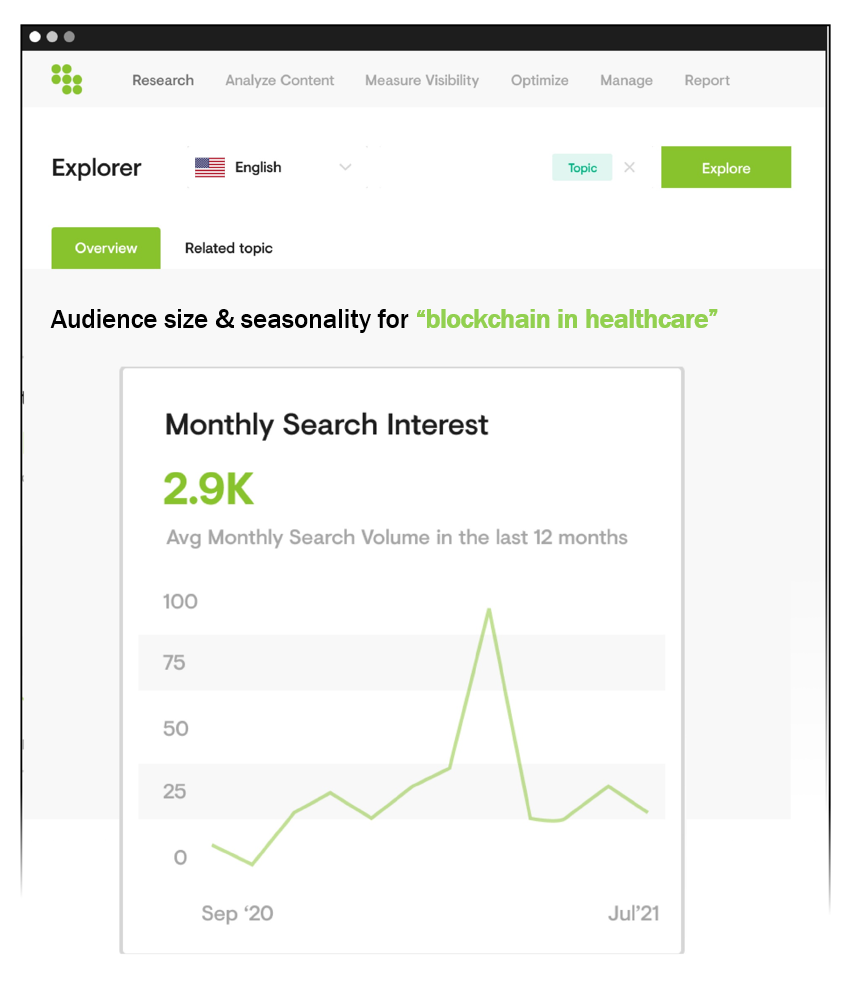
Healthcare Technology Trends in AI and Machine Learning 2021
When temperature screening became routine at hospitals, airports, and other public places early in the COVID-19 pandemic - searches for thermal screening and fever detection peaked, with many people seeking AI-powered non-contact solutions. Since then, though, we’ve witnessed a slow decrease in search volumeSearch Volume
Search volume refers to the number of search queries for a specific keyword in search engines such as Google.
Learn more for these solutions, with studies showing that temperature screening isn’t a reliable testing method .
Yet interest in other AI and machine learning keeps soaring in the healthcare industry. For example, searches for “AI for mental health” have increased 24% YoY. Researchers at MIT and Harvard University used an AI and machine learning model to track mental health trends related to COVID-19. They analyzed thousands of Reddit messages and found that topics related to suicidality and loneliness nearly doubled during the pandemic.
AI offers multiple applications to drive healthcare transformation and influence patient care. AI-driven models are successfully providing facial recognition for people wearing masks. AI is enhancing CT scan analyses to help detect pneumonia in people with COVID-19. A promising new AI-based radiotherapy tool, Project InnerEye by Microsoft , brings the promise of using 3-D imaging to detect cancer and help determine the appropriate treatment.
Another AI search standout: chatbots. They saw a 122% YoY increase in search volume during COVID-19 as health systems and providers started using them to design symptom trackers that can help direct patients to the right care and resources virtually .
Healthcare Trends in IoMT for 2021
Interest in wearable medical devices that can improve preventive care are surging. Remote monitoring devices allow patients to track vital signs like body temperature, skin temperature, blood pressure, blood sugar, blood oxygen level, heart rate, and more. IoMT solutions drove about 30% of the total Internet of Things market in 2020 .
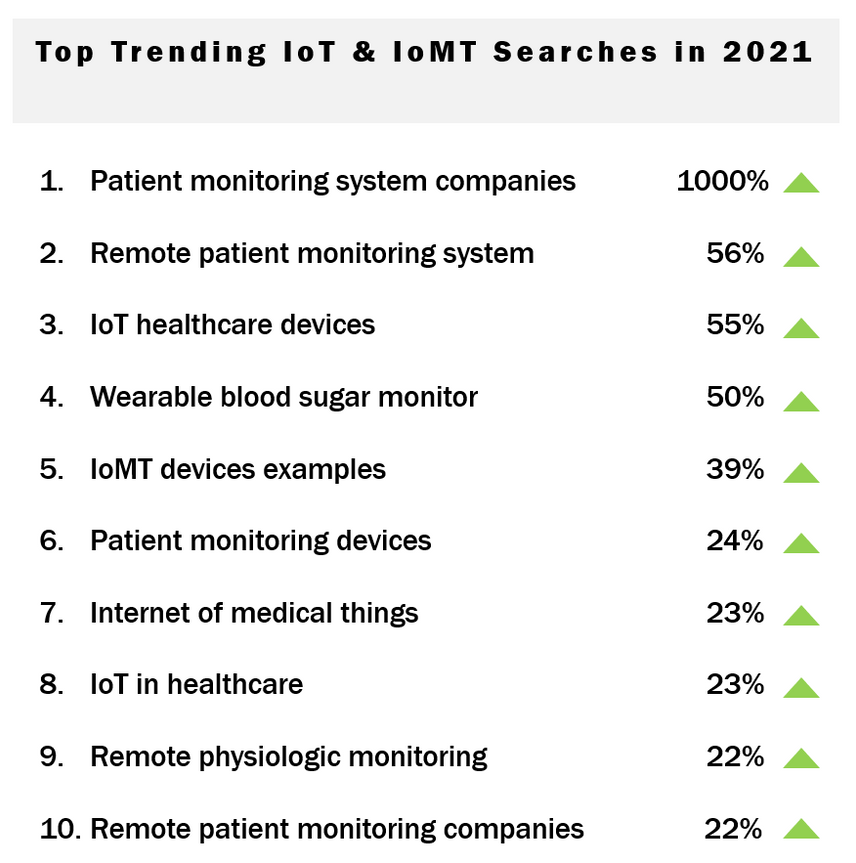
Healthcare Technology Trends in AR and VR in 2021
VR is revolutionizing the future of healthcare and medical education . Faculty uses VR to help medical students visualize the human body and study anatomy, leveraging VR’s enhanced computer graphics that can recreate body parts in great detail.
For patient care, VR allows surgeons to use data from CT, MRI, and ultrasound scans to create preoperative surgical plans that improve accuracy during robotic-assisted surgeries. VR also has applications in mental health, helping patients overcome phobias like a fear of heights or a fear of crowds. And VR is proven in helping pain management, with VR games helping distract patients during painful burn or physical therapy treatments.
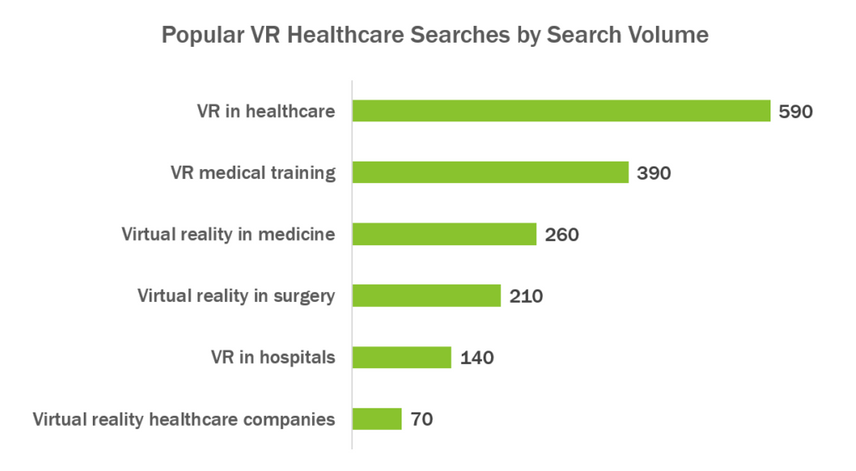
Healthcare Trends in Staffing 2021
There’s no denying the impact of COVID-19 on healthcare workers. Nurses in particular are quitting or retiring , exhausted from the demands of the pandemic. As health systems scramble to find workers, search demand for “healthcare staffing” continues to rise.
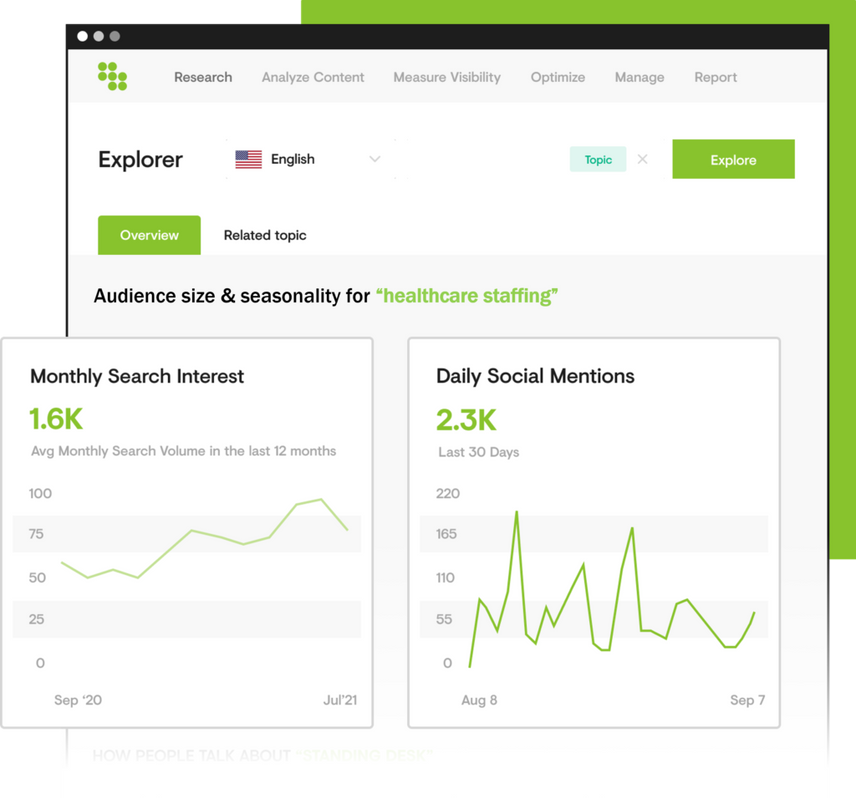
In addition, searches for “healthcare staffing solutions” increased by 136% YoY, while searches for “travel nurse companies” increased by 50%.
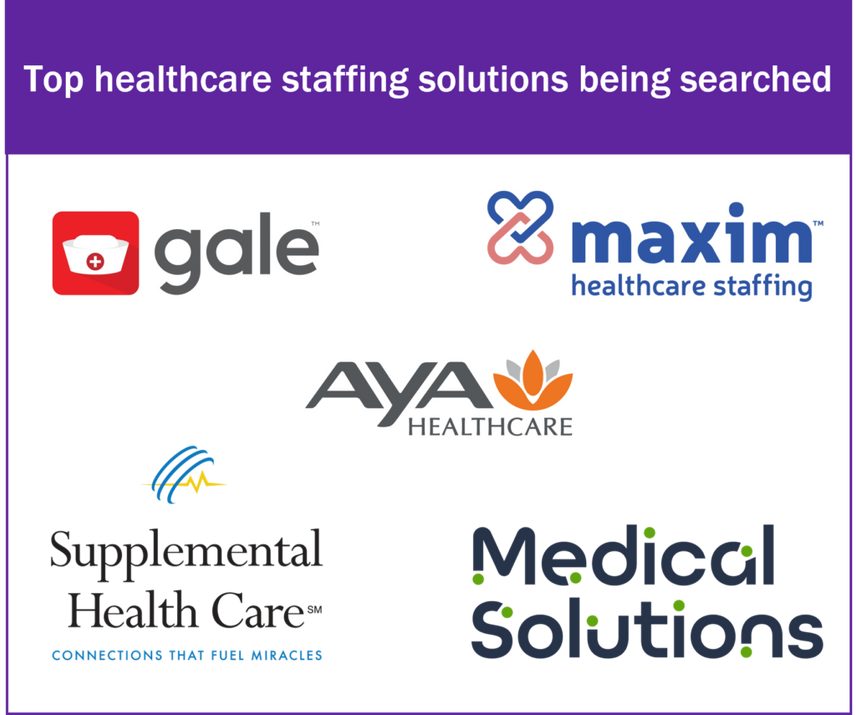
Gale leads the way in innovation. They’ve created their own platform that promises to fill open shifts in seconds while giving nurses greater control over their schedules.
Healthcare Technology Trends for Healthcare Professionals 2021
Searches for “apps for healthcare professionals” increased by 50% YoY. Many providers are now using apps like Medscape and Medpage Today to read the latest journal articles and clinical research. Other popular apps for healthcare professionals range from 3-D anatomy platforms for medical students, to tools that help providers connect patients to appropriate healthcare services based on U.S. Preventive Services Task Force recommendations.
The Future of Healthcare Technology
As the COVID-19 pandemic keeps evolving, so too does digital transformation in healthcare. This brings tremendous opportunities for providers and tech companies looking to gain a competitive advantage through SEO and organic content strategies. Learn how Conductor helps healthcare companies uncover their audiences’ voice, identify content opportunities, and optimize website performance.


